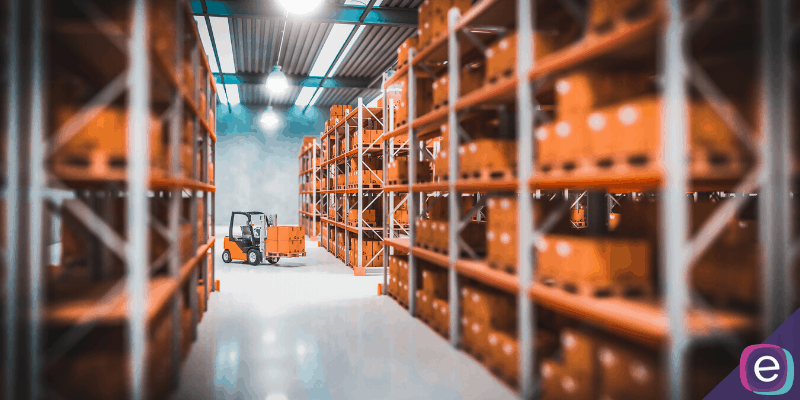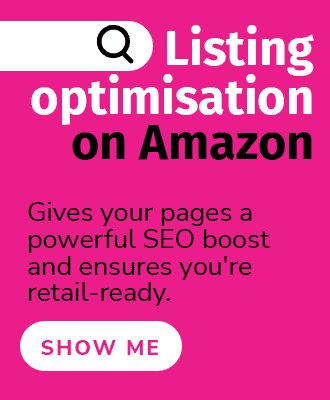FBA (Fulfillment by Amazon) offers a great fulfillment solution, especially for retailers and brands starting eCommerce activities and those with smaller volumes. It piggybacks on Amazon’s existing top-notch fulfillment operations. In Europe, it even enables pan-EU sales right from the start. Combined with the immense sales reach, it is the perfect solution for aspiring e-commerce players.
But are there limits to FBA? Is it possible to outgrow it? And if so, what are the challenges and fulfillment options?
The benefits of FBA
Let’s start with a closer look at the advantages FBA offers, from a logistics and fulfillment perspective. Obviously, there is the use of Amazon’s own operations and network. This is one of the best-managed logistics operations in existence, and arguably the best in the e-commerce sector. Piggybacking on that through FBA automatically takes care of things such as:
- Planning and execution of events like Prime Day, Cyber Deals Week, and the Q4 peak.
- Capacity planning for warehouse space and carriers.
- Daily operation for inbound deliveries at warehouses, inventory quality, and on-time delivery.
- A detailed operational KPI system.
- A complete software suite including WMS (Warehouse Management System) and TMS (Transportation Management Solutions).
- Fully traceable shipments.
- Warehouse operations or small articles (sortable in Amazon-speak).
- Effects on volume, due to the overall volume levels Amazon handles.
For a company just getting started in e-commerce, this is as close to a perfect solution as possible. By taking care of the critical logistics and supply chain activities, FBA enables companies to grow their e-commerce business.
The limits of FBA
But is it possible for a business to outgrow FBA options and benefits? The short answer is, yes. For a long answer, we need to understand the limits of FBA.
FBA is, by its very nature, a highly standardised and highly specialised fulfillment solution. This is what makes it so powerful. And this standardisation and specialisation also leads to FBA’s limitations. First, FBA serves primarily Amazon’s platform. Logistically, using Amazon’s fulfillment operations from other channels is possible, but hard to implement (multi-channel fulfillment is a good topic for another article). But standardisation goes beyond the sales channel, as good as Amazon’s logistics are, they are geared toward Amazon’s business requirements. Which means to fulfill all kind of products and categories out of the same warehouses (depending on sizes, sortable non-sortable, and heavy-bulky). Some categories could likely benefit from a more specialised warehouse solution, like fashion or furniture.
And then there is the obvious point of depending on the same partner for both sales and fulfillment. A dependency we all saw take a hit during the Covid-19 pandemic, which caused supply chain disruptions across most Amazon categories.
How exactly can one outgrow FBA?
First, by volume. Above a certain order volume, which depends on the individual case, FBA does not offer the flexibility, and more importantly the level of control over general operations and individual shipments that a shipper would like. Another, potentially easier to reach limitation, is selling through multiple sales channels and platforms. As soon as Amazon is no longer the only channel used, FBA can turn from a growth enabler to a growth limitation. This is closely related to inventory, because having dedicated inventories for each sales channel drives inventories up. A result is increased bound capital and, as counter-intuitive as it sounds, reduced availability.
So what should a retailer or brand do at this point? The first is to conduct a thorough analysis of whether or not any issues are truly caused by FBA’s limitations or something else. In order to keep this article short, let’s assume the business in question is hitting one, or multiple, of FBA’s limitations. Then, there are several challenges up ahead, and several key questions to be answered.
The challenges derive mainly from all the things FBA takes care of. FBA uses a fully integrated and transparent fulfillment system that benefits from high volume. One challenge is finding a fulfillment setup and partners that offer a similar level of transparency. Another challenge is to generate sufficient volume to enable the same service level, e.g. daily pick-ups from multiple parcel and express carriers. Another challenge is inventory replenishment. Just because a business hit some of FBA’s limitations doesn’t mean FBA becomes irrelevant. This can be the case for sortable articles or because Amazon is generating a significant order volume for certain articles. If FBA is going to play a role in the future, inventory replenishment becomes more complex as is inventory management.
The key questions to be answered before formulating a fulfillment strategy for your business are:
- Which fulfillment options can be used?
- Which sales channels are going to be used?
- How should products be segmented?
- How is the existing logistics network structured?
Other fulfillment methods and strategies
As mentioned, FBA can still play a role in fulfillment, even if it is no longer the sole option. Alternatives are FBM (Fulfillment by Amazon), becoming an Amazon vendor, using a portion of your existing self-owned warehouses, or 3PLs and other external partners. Even setting up your own drop-shipping operations can be an option. Defining the optimal setup depends on the individual case, but generally speaking the first steps in e-commerce fulfillment should focus on simplicity and scalability.
Which sales channels are going to be used is an important question, because this is the main driver behind interfaces between web-shops and online marketplaces and the fulfillment system. Integration options include individual interfaces for each sales channel or the use of third-parties to manage that provide the necessary middleware.
Product segmentation is a critical question. Not all products might be sold through all channels, certain products might best be fulfilled by FBA, others by FBM, and again others by a 3PL (Third-Party Logistics). Some businesses use a combination of these. Segmentation criteria includes, among other things, turn rates, demand patterns, product dimensions, and required delivery options.
Finally, it is important to have a close look at existing logistics operations and their capabilities. It is important to be honest here, e-commerce fulfillment is a totally different beast than bulk. People and warehouse hardware are not the problem, but rather capacities, processes, tools, and management capabilities. It is also important to include any existing external partners in that analysis. Existing 3PLs might be able to handle single-unit orders already, they might have multi-user sites offering volume effects. Suppliers might already be able to offer drop-shipping.
Need more assistance?
Whether you need support on the analysis part, or assistance developing different fulfillment strategies, contact eCommerce Nurse for help.




